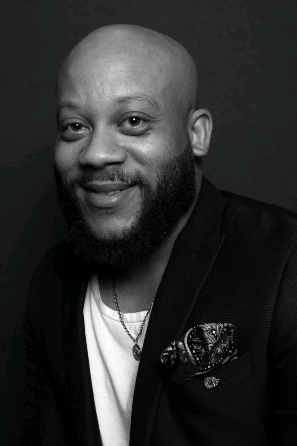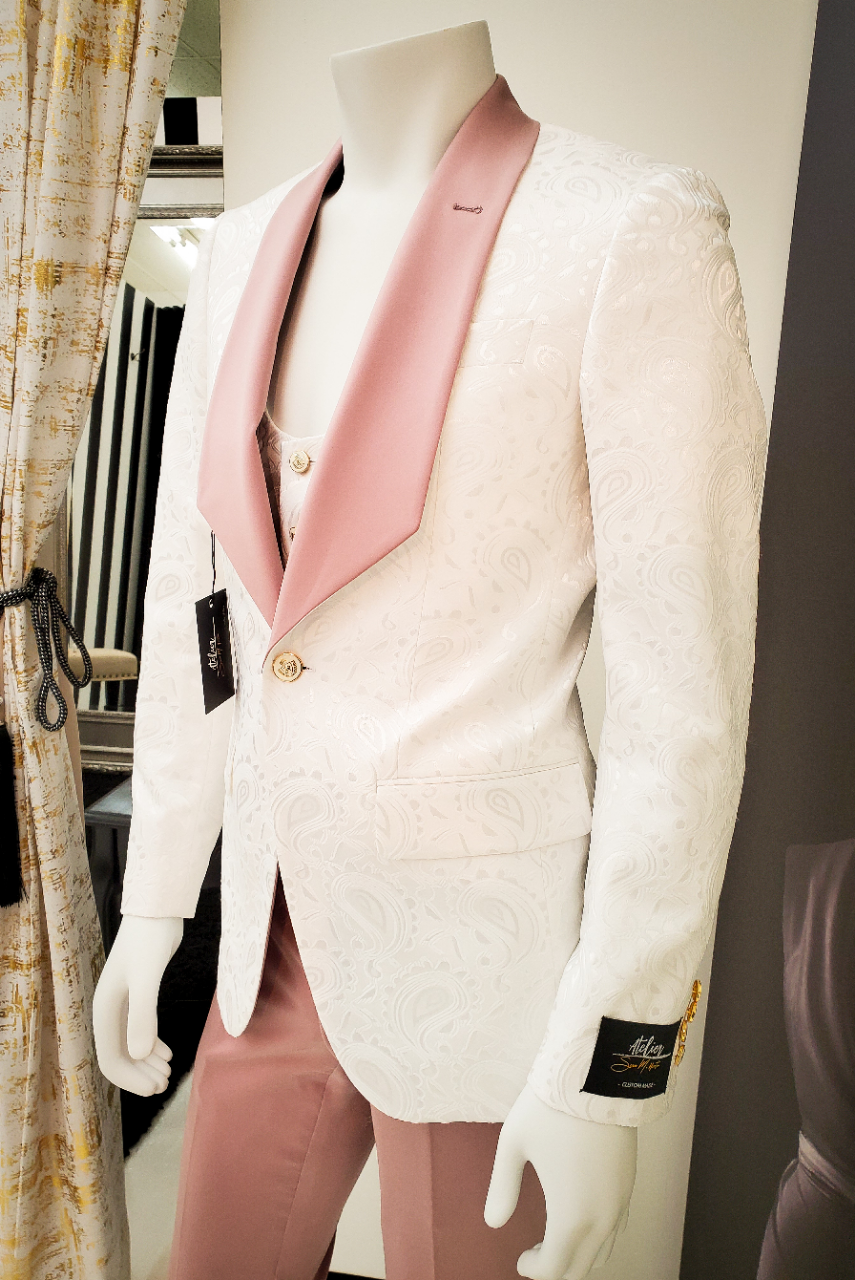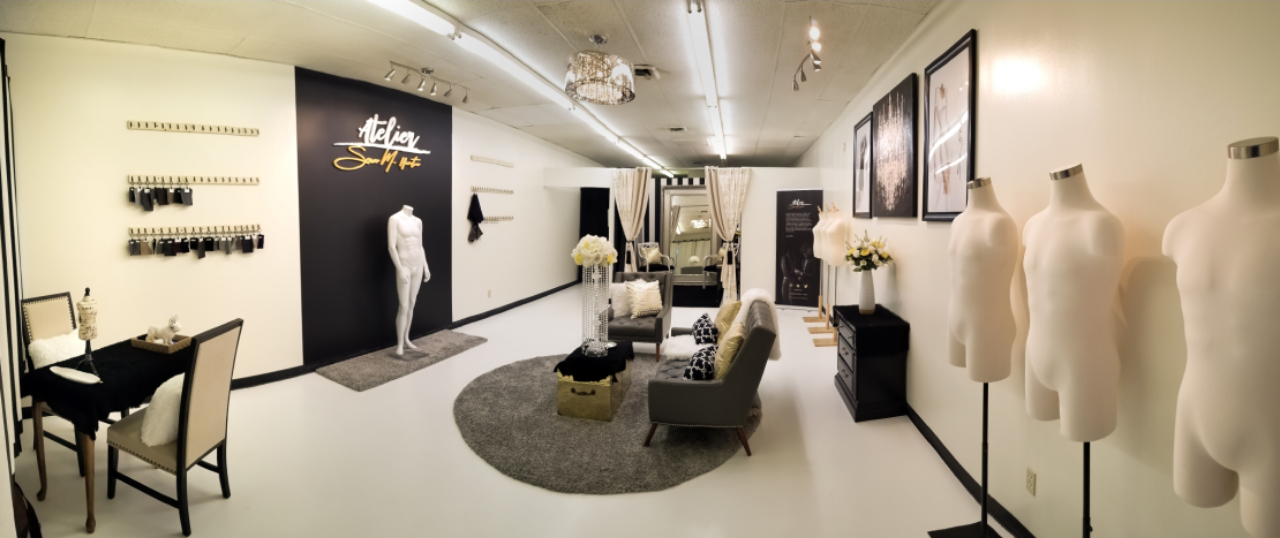As our cultural consciousness shifts amid a global pandemic and reckoning with racism, fashion is one of many industries holding a mirror to its own lack of representation. While Black-owned brands are gaining the long-overdue recognition they deserve, Black designers continue to struggle for representation. According to New York Magazine, “Within the Council of Fashion Designers of America, one of the industry’s most prominent trade organizations, only 3% of members are Black.”

Sean M. Horton understands this issue firsthand as an independent custom-fit clothing designer based in the Kansas City metro area. He owns SMH Atelier, a studio he opened just two years ago, pivoting from working at a Ford manufacturing plant to pursuing his lifelong aspirations of breaking into the fashion design scene.
Horton is leveraging his newfound success as a way to give back to his community and create change within his own sector. By identifying the gaps that he had to navigate while starting his career, he’s expanding SMH Atelier to provide internship opportunities for local college students to get hands-on design experience, create new positions for diverse seamstresses and tailors, and pursue partnerships with other designers of color.
In this Q&A, Horton weighs the problems and solutions with a lack of visibility for Black fashion designers — especially in the Midwest.
How did you find your passion for fashion and pursue that to become a designer?
Sean M. Horton: My passion for fashion came from my mom. When I was about 12 years old, she used to make a lot of fur hats and coats for Alaskan Fur. I started designing my own clothes, she’d make them for me, and I would wear them to school. I’ve been a fashion junkie my whole life. I didn’t go to school for fashion design until about 2006. I attended the Kansas City Art Institute for Fabrics and Textiles, then got my degree at Johnson County Community College (JCCC) for fashion design in 2009.
When I graduated, I still worked for 12 to 14 hours a day at the Ford subsidiary plant because I had a family to take care of. Five years ago, I started taking clients on the side in my free time. Three years ago, I quit my job and used my savings to start this business, so I could do what I love full-time.
This is only the second year that I’ve had this business open. Right now, it’s just me, my business partner, and my mom. My business partner handles everything around finances, marketing and ordering supplies. I handle design, making the clothing and consultations.
Why custom-fit clothing? What role does personalization play in the work you do?

No matter how much you spend on clothes at higher-end brands, they usually don’t fit the way you’d like. The sleeves might be too long or short, or the collar might be too snug. When you’re investing in clothing, I believe that it should fit perfectly. With custom-fit clothing, you look so much better and get exactly what you want.
I have the Italian philosophy when it comes to clothes. A lot of Italians don’t have 300 garments in their closet. They may have 20 or 30 pieces total, and they’re top quality. Those are pieces they can wear for decades. When you get quality, custom clothing that will last, you don’t have to go shopping every few weeks and worry about your clothes getting destroyed in the wash. So it’s about sustainability, too.
What are your plans for growth?
My goal at the end of the day is to expand the company to the point where we can start providing opportunities for tailors and seamstresses to work locally. I want to have enough business to take on students that need internships, and eventually have a job that those students can possibly move into here in the Midwest.
When my classmates and I were looking for internships to college, there was no place to go, and there still isn’t. You have to go do an internship at J.C. Penney or Dillard’s, and all you do is style the mannequins. You don’t get to sew, design, or make clothes. Hands-on experience is important in fashion. That’s why I’m going to be working with interns from JCCC and the Art Institute, and having them come in and have a proper fashion design internship.
How has COVID-19 affected your business?
Our first year, we ran everything out of pocket. We didn’t make any profits because that time was spent building the business and doing everything else around creating the studio space. We didn’t open until late 2019, and we already had about $18,000 on the books for custom gowns and suits.
We were about to be profitable until COVID-19 came along, and every client canceled. We were devastated. We started filing for grants but didn’t get them. A lot of Black businesses didn’t get any grants or loans at all, so we had to get creative.
As soon as COVID-19 hit, we immediately pivoted from doing custom-fit clothing to making masks. This was before the whole mask craze even started, so we were some of the first people to start doing that. It actually sustained the business as far as rent and utilities. It was a blessing that we were able to do that because some others didn’t have that ability — and those businesses largely ended up shutting down. We’re starting to pick up now, but we’re still so behind.

What’s it like to be a Black-owned business in the Midwest? And can you speak on the representation of Black designers in the fashion industry?
That’s something I talk about a lot, and the thing is, all minorities are underrepresented in the fashion industry. You pick up any fashion magazine, and how many Black people do you see on the cover? You might see six Caucasian people and that one minority they had to get to make it look diverse. The same thing is happening on so many runways and fashion shows. There are a lot of high-end Black fashion designers, like Tracy Reese, but many of them aren’t represented.
I don’t know how to overcome that. You can’t make someone represent you or your race. The only thing I can do is know that I’m making sure those people are represented in my work, when I’m doing fashion shows or TV commercials. There are high-end fashion designers from minority groups out there, but they just don’t get mentioned as much as they should.
Do you think that lack of visibility is a problem? If so, why?
Yes, lack of visibility is a problem. In the fashion industry, people want what other people say they have. If someone on the red carpet says they’re wearing Valentino and Gucci, other people will want Valentino and Gucci. If someone says they’re wearing Tracy Reese, a Black designer, then all of a sudden everyone is into Tracy Reese. Name-dropping is huge in the fashion industry. If you don’t get that kind of recognition from big names like celebrities and influencers, you won’t get any exposure. You have to fight tooth and nail for that exposure.
As a Black business owner, do you feel a responsibility to help uplift other Black designers in the fashion industry?
Most definitely. I try to work with as many Black designers here as I can, so we collaborate on fashion shows and other projects. I’m into unifying people as a whole. I don’t want to just work with Black designers; I want to work with everyone that’s not being represented. That’s what I want other people to try to do. You have to be the change.
Do you think it’s important for consumers to know they’re supporting a Black-owned business?
In today’s age, yes. People have to make a conscious effort to support Black businesses because they’re not getting the attention they need. A prime example is the COVID-19 relief grants. Black businesses didn’t get those grants at the same rate as white-owned businesses. It was all over the news. That’s why people had to start programs to get grants and loans specifically for Black businesses. To tell you the truth, that’s weird to me. Why do I need a specific Black business loan for my business? Why can’t we just get a business loan? That tells you there’s a lack of support for Black businesses. If there wasn’t, why would there be a need for that? You know it’s just not being provided. It’s needed, but I don’t think people are really digesting what that suggests about the business economy.
Brandon at GIFTKC was the first person to reach out to me when we were struggling with the business, during COVID-19. We did a newspaper article with The Pitch to tell more about what our local Black business community was going through, as far as grants and loans and trying to overcome the pandemic at the time.